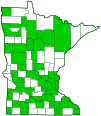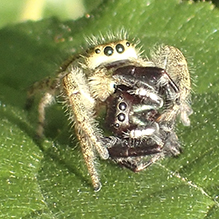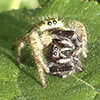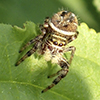brilliant jumping spider
(Phidippus clarus)
Conservation • Description • Habitat • Biology • Distribution • Taxonomy
|
|
||||||||||||||
Description |
Brilliant jumping spider occurs across North America from coast to coast. It is common east of the Great Plains, less common on the West Coast, and absent form the desert southwest. It is very common in Minnesota. A study in 1997 surveyed jumping spiders in 30 locations around Minnesota. The author collected 572 jumping spiders representing 15 species. Brilliant jumping spider was by far the most common, with 299 specimens (52%) collected. Brilliant jumping spider is found from July to September in moderately moist fields on grasses and perennial plants. It is a small to medium-sized spider (order Araneae) but a relatively large jumping spider (family Salticidae). The male is mostly black and 3 ⁄16″ to ¼″ long not including the legs. The front part of the body (cephalothorax) is robust. The plate covering the cephalothorax (carapace) is high, longer than wide, black, shiny, and iridescent. The abdomen is black with a white band around the front; a broad; a reddish-orange longitudinal stripe on each side; and four pairs of small white spots on or bordering a pair of thin, black, longitudinal stripes near the middle. The legs are short, hairy, and black, with pale bands near the end of each segment. The female is larger, 5 ⁄16″ to ½″ long and has bronze-red to gold scales on the carapace. The abdomen is variable in color. The light form female is varying shades of gray, tan, brown, and orange. The dark form female is colored similar to the male. The colors may be an adaptation to the local environment. The light form may help to camouflage the spider from birds, while the dark form with bright reddish-orange may be warning coloration to predators that avoid wasps. The legs on the light form are pale with dark bands near the end of each segment. There are four pairs of eyes arranged in what appears to be three rows. The first row of four eyes is recurved. The middle and forward-most pair of these is by far the largest of all of the eyes and can be moved. The second row of two eyes is closer to the first row than it is to the third row, which is set far back on the head. The second and third rows form a square. The jaws (chelicerae) are small. The basal parts of the chelicerae are iridescent green or blue. There are two sensory appendages (palps) associated with the mouthparts. Each palp has a conspicuous white stripe on top (dorsally). |
Size |
Female Body Length: 5 ⁄16″ to ½″ Male Body Length: 3 ⁄16″ to ¼″ Legspan: 5 ⁄16″ to ½″ |
Web |
None |
Similar Species |
Habitat |
A wide range of habitats, especially old fields and weedy areas in open woodlands |
Biology |
Season |
June to September |
Behavior |
Brilliant jumping spider hunts during the day by sneaking up and pouncing on its prey. It releases silk while jumping as a drag line to prevent falling. It does not hunt at night. It will bite if molested but is usually too quick and wary to be caught. It can jump 10 to 50 times its body length. |
Life Cycle |
The female is a paragon of parental perseverance. In the fall she creates a large white egg sac at the top of a tall grass or herbaceous plant and drops eggs into the sac. She prevents the eggs from drying out by repeatedly adding silk to cover the egg mass. She stays with the egg sac until the young disperse in about a month. During this time she does not feed and usually dies from starvation a few days later. The eggs are highly parasitized by flies, mantis-flies, and wasps due to the exposed location of the egg sac. Early stage spiderlings overwinter. Adults reach maturity in mid-summer |
Food |
Insects and other spiders |
Distribution |
||
|
Sources |
|
| 4/8/2025 | ||
Occurrence |
||
Common and widespread. Very common in Minnesota |
||
Taxonomy |
|
Class |
Arachnida (arachnids) |
Order |
|
Suborder |
Araneomorphae (typical spiders) |
Infraorder |
Entelegynae |
Superfamily |
Salticoidea |
Family |
Salticidae (jumping spiders) |
Subfamily |
Salticinae (typical jumping spiders) |
Tribe |
Dendryphantini |
Subtribe |
Dendryphantina |
Genus |
Phidippus |
Subordinate Taxa |
|
|
|
Synonyms |
|
Attus flavus Phidippus bilineatus Phidippus clarconensis Phidippus homarinus Phidippus insolens Phidippus minutus Phidippus multiformis Phidippus princeps Phidippus rimator Phidippus testaceus |
|
Common Names |
|
brilliant jumper brilliant jumping spider |
|
Glossary
Carapace
The hard, upper (dorsal), shell-like covering (exoskeleton) of the body or at least the thorax of many arthropods and of turtles and tortoises. On crustaceans, it covers the cephalothorax. On spiders, the top of the cephalothorax made from a series of fused sclerites.
Cephalothorax
The front part of a spider’s body, composed of the head region and the thoracic area fused together. Eyes, legs, and antennae are attached to this part.
Chelicerae
The pair of stout mouthparts, corresponding to jaws, in arachnids and other arthropods in the subphylum Chelicerata.
Palp
Short for pedipalp. A segmented, finger-like process of an arthropod; one is attached to each maxilla and two are attached to the labium. They function as sense organs in spiders and weapons in scorpions.
Visitor Photos |
||
Share your photo of this arachnid. |
||
This button not working for you? |
||
Alfredo Colon |
||
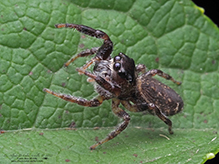 |
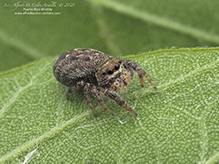 |
|
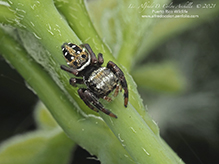 |
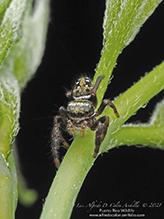 |
|
Female |
||
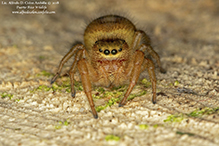 |
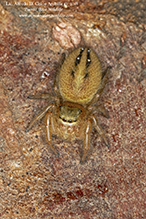 |
|
Male |
||
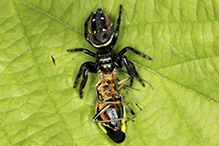 |
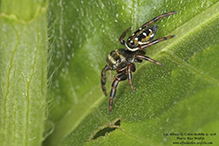 |
|
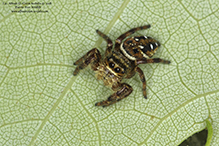 |
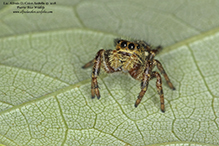 |
|
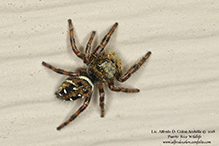 |
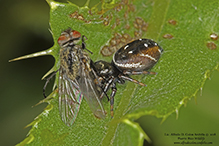 |
|
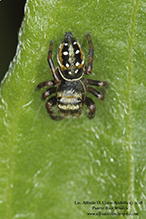 |
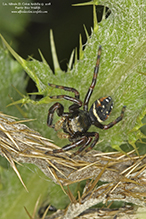 |
|
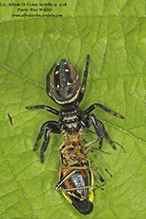 |
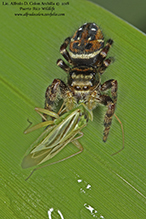 |
|
Babette Kis |
||
Phidippus clarus I've been at Barnes Prairie most days for the last months, and have seen some interesting behavior in Phidippus clarus during this time. Phidippus clarus, brilliant jumping spider, with a smaller spider prey of the same species. The photo was taken at Barnes Prairie, Racine Co., WI on the morning of July 17, 2023. |
||
Phidippus clarus pictures I know you probably have plenty of these, but I'm attaching a few photos of Phidippus clarus, brilliant or prairie jumper, found on Barnes Prairie, Racine Co. WI. Photos were taken in June 2023. |
||
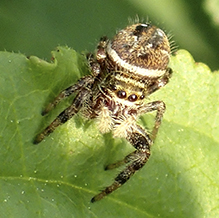 |
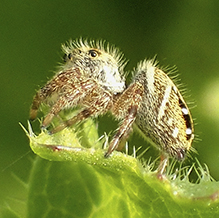 |
|
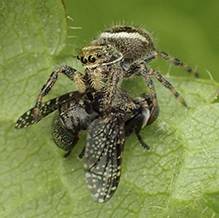 |
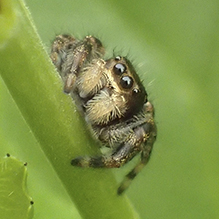 |
|
Phidippus clarus brilliant or prairie jumping spider |
||
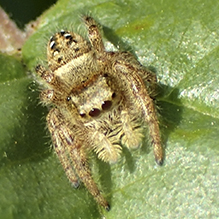 |
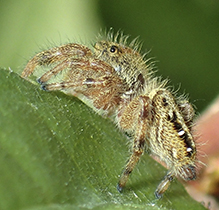 |
|
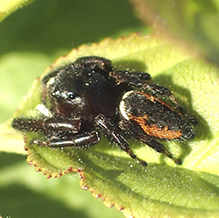 |
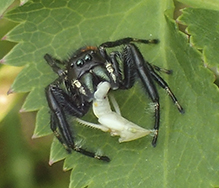 |
|
Joel Dunn |
||
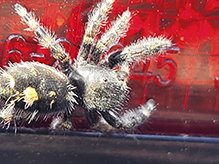 |
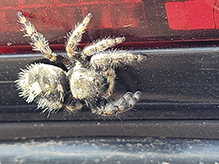 |
|
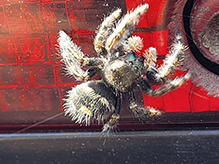 |
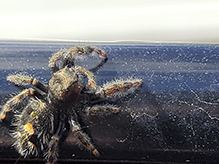 |
|
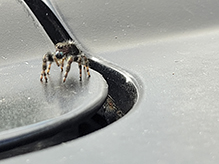 |
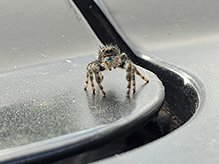 |
|
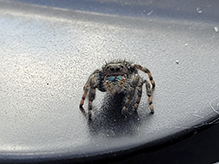 |
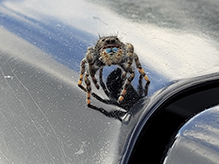 |
|
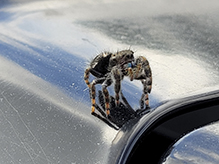 |
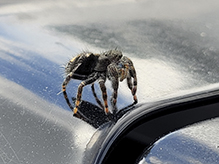 |
|
MinnesotaSeasons.com Photos |
||
|
||
|

Slideshows |
|

Visitor Videos |
||
Share your video of this arachnid. |
||
This button not working for you? |
||
|
Other Videos |
||
Phidippus clarus - Jumping Spider |
About
Published on Nov 25, 2010 male and female Phidippus clarus jumping spider with female in web structure; cannibalism |
Jumping Spider-Female Phidippus Clarus |
About
Published on Nov 8, 2014 I finally found a phidippus clarus jumping spider. There are several color and pattern variations of this species, I was so glad to find out that we have the red and orange variations around the area I live. I hope to find a male in the near future. |

Visitor Sightings |
||
Report a sighting of this arachnid. |
||
This button not working for you? |
||
|
|
Alfredo Colon |
Location: Albany, NY |
 |
| Babette Kis 6/27/2022 |
Location: Barnes Prairie, Racine Co., WI |
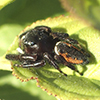 |
| Babette Kis 6/26/2022 |
Location: Barnes Prairie, Racine Co., WI |
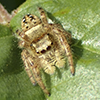 |
| Babette Kis 7/2/2021 |
Location: Barnes Prairie, Racine Co., WI |
 |
| Alfredo Colon 6/8/2021 |
Location: Woodbury, Minnesota |
| Alfredo Colon 6/1/2021 |
Location: Woodbury, Minnesota |
| Alfredo Colon 8/27/2018 |
Location: Woodbury, Minnesota |
| Alfredo Colon 6/10/2018 |
Location: Woodbury, Minnesota |
MinnesotaSeasons.com Sightings |
||
|

Created: 11/21/2018 Last Updated: © MinnesotaSeasons.com. All rights reserved. |
